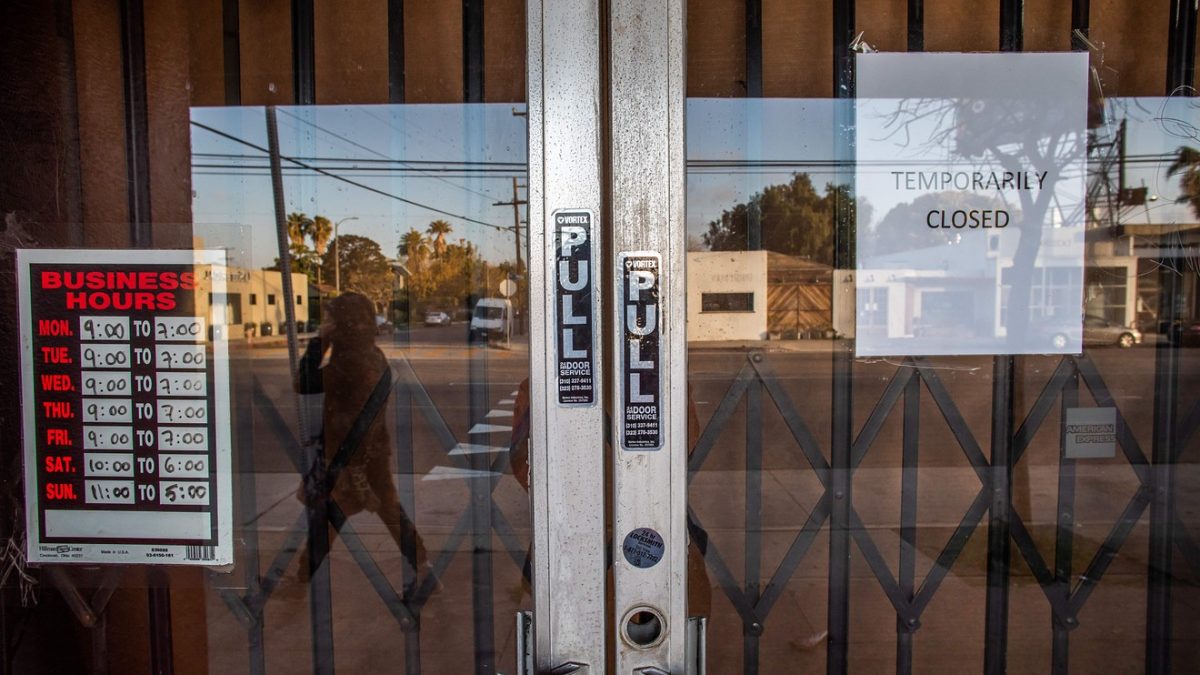Oil prices prove one bright spot in a downbeat Friday

Published: April 3, 2020 at 4:43 p.m. ET, By William Watts and Andrea Riquier
Stocks finished sharply lower Friday, and for the week, after the release of the monthly U.S. employment report set a grim tone for trade, showing massive job losses in March, even before the extent of the economic devastation from the coronavirus pandemic has been fully realized.
However, crude-oil prices, another focus for investors, finished the day higher on hopes of a possible detente between Saudi Arabia and Russia at a planned Monday meeting of oil-producing giants.
What are major indexes doing?
The Dow Jones Industrial Average US:DJIA was 360.91 points, 1.7%, lower to end at 21,052.53, while the S&P 500 US:SPX lost 38.25 points, or 1.5%, to close at 2,488.65. The Nasdaq Composite Index US:COMP lost 114.23 points, or 1.5%, to end at 7,373.08.
For the week, the Dow lost 2.7%, the S&P 500 declined 2.1% and the Nasdaq put in a weekly drop of 1.7%.
What’s driving the market?
Economic data and the state of oil were the big themes for the week as the market sorts through the outlook for a coronavirus-stricken economy.
The day got off to a downbeat start as the March jobs report showed that 701,000 Americans lost their jobs in March, far exceeding worst-case scenario estimates and highlighting the already-rapid impact the coronavirus shutdowns have had and will have on the economy in the coming months. Friday’s report was the first decline in payrolls since September 2010 and weren’t far from the worst month of job losses during the 2007-09 recession.
The unemployment rate rose to 4.4% from 3.5% in February, as employers just began to trim hiring and cut payrolls ahead of social-distancing practices that have shut down swaths of the U.S. economy to help slow the spread of COVID-19, the deadly infection that was first identified in December but that has already been contracted by more than 1 million people world-wide.
Despite the grimness of the labor-market report, it fails to capture the full damage from the virus because the Labor Department collected data during the week ending March 12, just as the nation began its near shutdown. More relevant has been reports on jobless claims, with Thursday’s showing the number of first-time applications soaring by a previously 6.6 million in the most recent week. That adds to a report from a week ago that showed a then-record 3.3 million people submitting applications for unemployment benefits.
All total, some 10 million people are without jobs, which likely puts the unemployment rate at or near 10%, economists have said, and the data is setting up to get worse from here.
Stocks saw bumpy trade as investors attempted to weigh gauge the depth and duration of the deadly contagion.
Investors have hoped that much of the negative outlook has been priced in but the enormity of the figures have proved daunting to some bulls, but some investors remain optimistic.
“Indeed, investors believe there is a V coming with the stimulus kicking into gear in coming weeks,” economist David Rosenberg told MarketWatch, referring to the shape of an economic recovery that is characterized by a deep decline and a rapid economic rebound.
Meanwhile, oil futures produced another set of double-digit gains as Saudi Arabia, Russia and other major producers are set to debate production cuts of at least 6 million barrels a day on Monday, The Wall Street Journal reported.
at 39.8, the steepest decline in its decadelong history, but the nonmanufacturing index from the Institute for Supply Management was 52.5 down from 57.3, showing growth but at slowest pace since August 2016. A reading of at least 50 shows improving conditions while anything below that threshold signals contraction.
Which companies are in focus?
Shares of Citrix Systems Inc. US:CTXS edged down 0.8% after a price target increase from Raymond James.
Bloomin’ Brands Inc. US:BLMN executives will forego salaries in an attempt to manage cash flow, the company said Friday. Bloomin’, whose brands include Outback Steakhouse, has seen shares lose nearly 70% of their value over the past year. Shares fell nearly 3%.
Lululemon Athletica Inc. US:LULU shares ticked down 2.2% after the company said late Thursday that it would continue to pay sales employees through June 1, whether or not stores reopen.
Under Armour Inc. US:UA US:UAA said it would take charges on business decisions unrelated to the coronavirus outbreak. Class A shares gained 5.5%, while class C shares rose 8.6%.
Twitter Inc. US:TWTR shares edged up 0.3% on Friday after an upbeat report from Goldman Sachs.
How are other markets trading?
Government bond yields extended their drop, with the yield on the 10-year U.S. Treasury BX:TMUBMUSD10Y down about 3.7 basis points to 0.587%.
Oil markets rebounded on hopes that production would soon be reined in, with the price of a barrel of West Texas Intermediate crude oil for May delivery US:CLK20 up $3.02, or 11.9%, to settle at $28.34 a barrel after climbing 24.7% Thursday on the New York Mercantile Exchange.
In precious metals, gold US:GCJ20 for June delivery on Comex rose $8, or 0.5%, to settle at $1,645.70 an ounce. The most-active contract registered a loss of 0.5% for the week, according to FactSet data.
The U.S. dollar US:DXY continued its climb, rising 0.5% against a basket of its major trading partners, according to the ICE U.S. Dollar index. For the week, it gained 2.3%.
European stocks closed lower, with the Stoxx Europe 600 index XX:SXXP down 1% and the FTSE 100 FR:FTSE losing 1.2%.
Source: www.marketwatch.com